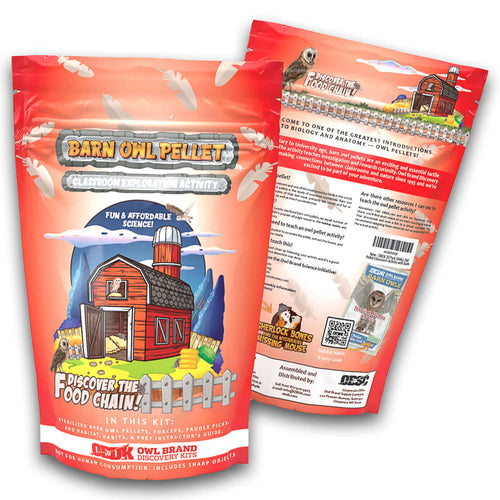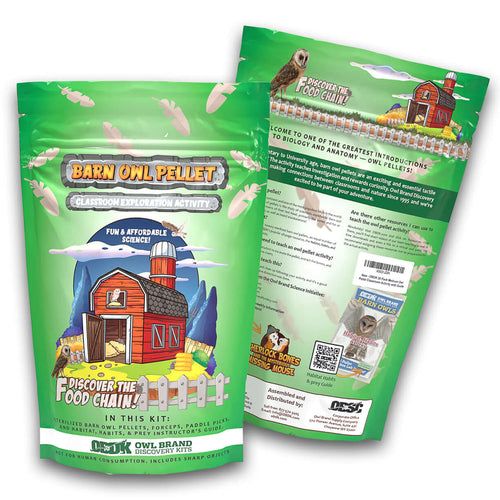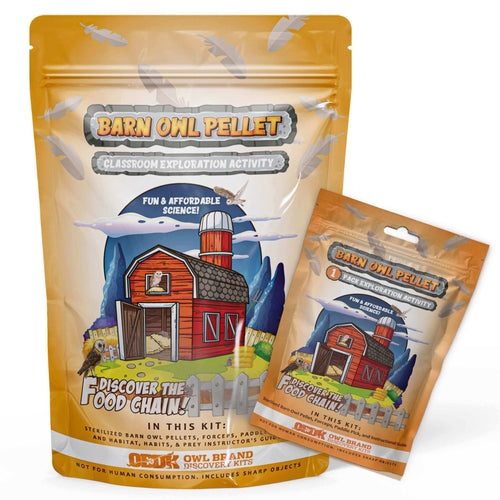No Products in the Cart
The Pellet Project: Tracing Diets from the Inside Out

Nature’s Hidden Data
Some scientists collect soil samples or trap insects. Barn Owls leave behind pellets — and every pellet is a complete data set.
After eating, owls regurgitate compact bundles of fur, bone, and feathers. They do it instinctively, but unknowingly, they’re documenting their environment. Every pellet shows what species thrive nearby, what disappears, and what kind of balance the land holds.
“Every pellet is a story — of what thrived, what vanished, and how the land itself is changing.”
To hold one in your hand is to hold a record of nature’s economy — what’s abundant, what’s scarce, and how human activity shapes it all.
Nature’s Ledger
Pellets vary from place to place. A box of pellets from an organic farm might contain vole skulls, beetle parts, and frog bones — proof of a rich, pesticide-free ecosystem. Pellets from heavily treated farmlands, by contrast, might hold only a few species, smaller bones, or nothing at all.
In this way, pellets are environmental storytellers. They speak of irrigation cycles, prey diversity, and even chemical impact. When droughts strike, pellets become lighter; when rain returns, they’re filled with amphibians. The pellets don’t lie.
For students, dissecting one is like conducting real scientific fieldwork — no microscope or lab coat required.
The Human Connection
The relationship between people and Barn Owls goes deeper than curiosity. Farmers once relied on these birds as natural pest control. Before the age of chemicals, it was common to build nesting shelves inside barns just to attract them. Today, the same practice is returning under the name of regenerative agriculture — a bridge between science and tradition.
When you open a pellet and find a mouse skull, you’re looking at evidence of that connection — a reminder that nature manages itself if we let it.
Fun Fact
Owls don’t digest bone or fur. Instead, their stomachs separate the digestible from the indigestible, wrapping remains into a tidy capsule. It’s the cleanest recycling system in the animal world.
Classroom Connection: “Dissecting the Food Web”
Provide OBDK Owl Pellets Kits. Students carefully dissect, identify bones with charts, and record prey species. Then, compare findings to different regions or seasons. Ask: What might these results tell us about local farming or weather patterns? This isn’t just dissection — it’s data storytelling.
Product Spotlight: OBDK Owl Pellets Kits
Sterilized, safe, and classroom-ready, these kits are gateways into hands-on ecosystem science. Perfect for grades 3–8, they meet NGSS standards for interdependence and biodiversity.
Teacher Takeaway
A pellet is proof that every action echoes through the food web. Teaching students to interpret them turns observation into awareness — a lesson that lives beyond the classroom.




